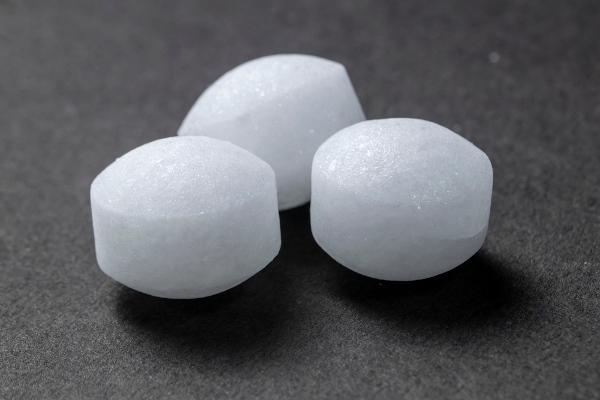Parana River is a 4880 km long water course that bathes part of the territories of the Brazil, of Paraguay and the Argentina. It rises from the confluence of the Paranaíba and Grande rivers and runs northeast-southwest through the states of São Paulo, Mato Grosso do Sul and Paraná, still acting as a natural border on part of the Brazilian borders with Paraguay and with Argentina. The waters of the Paraná River join the Uruguay River forming the estuary of the Río de la Plata, already in Argentine territory.
The Paraná River forms one of the most important river basins in South America, which is the Rio da Prata Basin. In Brazilian territory, its drainage region is called the Paraná Basin. It is the most populous area in the country, where there is a high concentration of economic activities, with emphasis on industry and agriculture. The Paraná River is important for the local and regional economy, in addition to its waters being responsible for generating electricity in hydroelectric plants such as Itaipu.
Read too: Amazon River — the longest river in the world
Topics of this article
- 1 - Summary about the Paraná River
- 2 - General data of the Paraná River
- 3 - Where is the Paraná River?
- 4 - Map of the Paraná River
- 5 - Characteristics of the Paraná River
- 6 - Source of the Paraná River
- 7 - Tributaries of the Paraná River
- 8 - Mouth of the Paraná River
- 9 - Upper Paraná River Basin
- 10 - Importance of the Paraná River
- 11 - Preservation of the Paraná River
- 12 - Curiosities about the Paraná River
Summary about the Paraná River
The Paraná River runs 4,880 km between Brazil, Paraguay and Argentina.
It rises from the confluence between the Paranaíba and Grande rivers and flows into the Prata river.
The occurrence of rainy climates in the upper course of the Paraná River provides the frequent existence of water in its bed. It is therefore a perennial river.
Its hydrographic basin comprises the regions with the highest population concentration in Brazil, covering an area of 820,000 km² in Brazilian territory.
The Paranapanema, Iguaçu and Pardo rivers are among its tributaries.
As it is a plateau river, it has a high hydroelectric potential and provides driving energy for the operation of important plants such as Itaipu, Ilha Solteira and Jupiá.
It has long navigable stretches, and one of its main waterways is the Tietê-Paraná.
The intense urban and economic activity in the Paraná Basin has led to the degradation of biomes, damaging stretches of the Paraná River.
Measures such as the creation of environmental protection areas are important for the preservation of the Paraná River.
Do not stop now... There's more after the publicity ;)
General data of the Paraná River
Length of the Paraná River: 4,880 km.
Source of the Paraná River: confluence between the Paranaíba and Grande rivers.
Main tributaries of the Paraná River: Tietê river, Paranapanema river, Iguaçu river, Pardo river and Verde river.
Mouth of the Paraná River: River of silver.
Where does the Paraná River flow: Estuary of the Río de la Plata, Argentina.
Average flow: 16,000 m³/s.
Maximum flow: 17,290 m³/s.
basin area: 1.5 million km² (820,000 km² in Brazilian territory).
Where is the Paraná River?
The Paraná River is a river what is in the south of South America, covering areas in Brazil, in Paraguay It is nto Argentina. In Brazilian territory, the Paraná River rises between the border of the state of São Paulo as state of Mato Grosso do Sul, making its way to the state of Parana. For a stretch of 190 km, the Paraná River acts as a natural border between Brazil and Paraguay, then flows towards Argentina, where its mouth is located.
map of the Paraná river

Characteristics of the Paraná River
The waters of the Paraná River run through a 4880 km journey between its source, in Brazilian territory, and its mouth, in Argentina. During this interval, the Paraná River plays the role of natural border between the states of São Paulo and Mato Grosso do Sul, in addition to bathing the border between Brazil, Argentina and Paraguay.
It is about a perennial river, that is, whose waters flow in its bed all year round. This is possible thanks to the climatic aspects of the source and the areas crossed by the Paraná River, marked by high volumes of rain. The average annual rainfall in the drainage region of this watercourse is 1400 mm.
The Paraná River presents plateau relief that characterizes both its source and its bed, which means that it has a high hydroelectric potential which, today, is used by plants such as Itaipu.
In addition to its potential for generating electricity, the Paraná River is also conducive to navigation. Its navigable stretch is 1023 km long and an average width of 120 meters. The main waterway installed in it is the Tietê-Paraná Waterway, which divides between the waters of the Paraná and the Tiete river, one of its main tributaries. This route extends from the Triângulo Mineiro, in the Southeast region, to the Itaipu Power Plant, on the border of Paraná with Paraguay.
A Paraná River Hydrographic Basin corresponds to the region bathed by the Paraná River and its tributaries in Brazilian territory. Its area is 820,000 km², which represents approximately 10% of the entire length of the country. Considering that the Paraná River extends beyond the borders of Brazil, we have a drainage area of 1.5 million km², which corresponds to the Rio de la Plata Basin, one of the most important in South America South.
Source of the Paraná River
the Paraná river rises from the confluence of two other watercourses, being them:
Big River: born in Serra da Mantiqueira, in Minas Gerais, at an altitude of 1980 meters, covering a good part of the border between the south of the state and São Paulo.
Paranaiba River: born in the Triângulo Mineiro region, also in the state of Minas Gerais. Its source is at an altitude of approximately 1150 meters, and it runs through part of the southwest of Minas Gerais before meeting the Rio Grande on the border with São Paulo, thus forming the Paraná River.
Tributaries of the Paraná River
See below which are the main tributaries of the Paraná River on its left and right banks.
Left margin: Tietê River, Paranapanema River, Iguaçu River.
Right bank: Pardo river, Verde river, Ivinhema river, Paraguay river, Salado river (Argentina).
Mouth of the Paraná River
After crossing part of the territory of Argentina, the Paraná River flows into the estuarine region of the Río de la Plata. The mouth of the Paraná River consisting of a huge complex that became known as Ilhas do Paraná depending on the pockets of sediment that formed.
Upper Paraná River Basin
The Upper Paraná Basin is a hydrographic sub-basin belonging to the Paraná river basin. It extends over areas in Paraguay and Brazil, where it comprises its largest area in the states of Mato Grosso do Sul, São Paulo and Paraná, therefore in three different regions of the country: Midwest, Southeast It is South. It contains important urban centers where there is a high population concentration and also economic activities, such as farming and the industry.
This section of the basin is delimited by the Itaipu reservoir, which feeds one of the main hydroelectric power plants in Brazil and the largest supplier of electricity to Paraguayan territory, which is the Itaipu Power Plant.
The Upper Paraná Basin It is also characterized by high biodiversity, containing many endogenous species of fish and other representatives of the local fauna and flora whose habitat is the biomes Brazilians of thick and the Atlantic forest.
Importance of the Paraná River

the Paraná river feeds two important hydrographic systems, which are the Paraná Basin, in Brazil, and the Rio da Prata Basin, which also includes the Bolivian, Argentinean, Uruguayan and Paraguayan territories.
This watercourse and its tributaries traverse the areas with the highest population concentration in Brazil, home to more than 60 million inhabitants, concentrated in large cities such as São Paulo, Campinas, Ribeirão Preto, Large field, Goiania It is Curitiba.
Its waters are important for the urban supply residencial and to maintenance of economic dynamism of the bathed region, which has a high number of agricultural crops, with emphasis on soy and sugar cane, and also industries.
Supply is both direct, with the supply of water, and indirect, through the use of water power to generate electricity. More than 50 reservoirs were built in the Paraná Basin.
Among the main hydroelectric dams on the Paraná River we can mention: Ilha Solteira (SP), Jupiá (MS) and Itaipu (border between Paraná and Paraguay), the latter being responsible for 10.8% of the electricity consumed in Brazil and 88.5% in Paraguay, according to data from Itaipu Binational.
the Paraná river constitutes one of the most important waterways in Brazil, which is Tietê-Paraná. This route integrates two of the largest grain producing regions in the country, which are the Midwest and the South, and helps in the flow of goods to other countries in the country. Mercosur, in addition to transporting passengers.
See too: São Francisco River — a river of great social, economic, and cultural importance for Brazil
Preservation of the Paraná River
The preservation of the Paraná River is essential for maintaining the quality of its waters, given the importance of this source for the population and for the biodiversity of the areas bathed by this watercourse.
Due to the intense anthropic activity that characterizes the Paraná basin, it is known that there are stretches with a high content of water pollution, at the same time that part of the areas covered with forest were deforested, which directly affects the Paraná River. It is also necessary to take into account the environmental impact caused by the construction of hydroelectric dams.
The creation and expansion of environmental protection areas (APAs) are important in this process of preservation of the Paraná River. One of them is the APA of the Islands and Floodplains of the Paraná River, which is located between Mato Grosso do Sul and Paraná and covers more than 1 million hectares of the Atlantic Forest biome.
Created in 1997, this APA aims to protect the forests and animal species that live in the region, especially those in danger of extinction, which currently number seven. The guarantee of ecosystem balance increases the protection of the springs present in its interior, which helps in the preservation of the Paraná River.
Facts about the Paraná River
It is the second longest river in South America. It is also among the most extensive in the world, in eighth position.
The name of the Paraná River is derived from the Tupi-Guarani term paranã and it means “like the sea” or even “a mighty river”.
It has one of the largest installed hydroelectric potentials in Brazil.
The Seven Falls, formed by the waters of the Paraná River in the west of the homonymous state, were once considered one of the most voluminous waterfalls in the world. They were extinguished with the construction of the Itaipu reservoir in 1982.
By Paloma Guitarrara
Geography Teacher
Get to know the characteristics of the Platina Basin and find out which basins it is formed by. Also understand the importance of this basin for the region where it occurs.
Learn more about the Tietê-Paraná Waterway - a waterway that connects the South, Southeast and Midwest regions of the country.
Understand the impasse involving Brazil and Paraguay over the value of surplus electricity.
Covering portions of several Brazilian states, the Paraná Hydrographic Region has great hydroelectric potential.
Learn more about the characteristics of rivers. Understand the importance of these water reservoirs. Get to know the main rivers in Brazil, and in the world.



